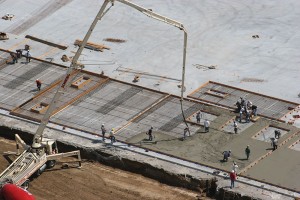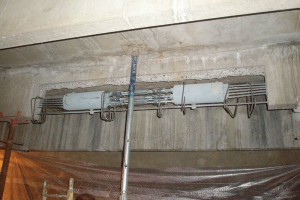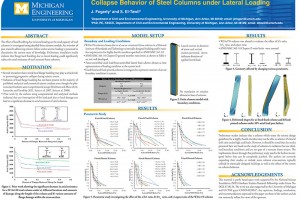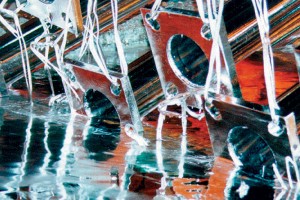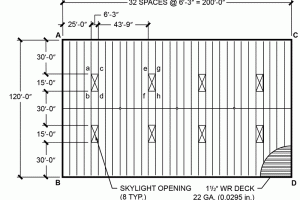Weather, climate and extreme events are key considerations in structural engineering design and practice. Weather is defined as “the state of the atmosphere with respect to wind, temperature, cloudiness, moisture, pressure, etc.” (NWS, 2013). Weather generally refers to short-term variations on the order of minutes to about 15 days (NSIDC, 2012). Climate, on the other hand, “is usually defined as the average weather, or more rigorously, as the statistical description in terms of the mean and variability of relevant quantities over a period of time ranging from months to thousands or millions of years” (IPCC, 2007). …
Review Category : Articles
High-strength welded wire reinforcement (WWR) mats offer a viable alternative to traditional tied rebar mats in tilt-up concrete panels. Using WWR can result in an overall decrease in reinforcing steel tonnage for the project, and allows much faster placement. Both of these factors can improve the project schedule and budget. However, there are critical differences in the panel design that must be considered. …
A new repair method was implemented to restore the structural integrity of precast double-tee stems that have lost their prestressing strands due to physical damage or corrosion. The repair method is intended for strands that are closely spaced, where currently available strand splices cannot be used without modification. Pressure jackets are used to splay the wire strands apart and align them with splices in order to re-stress the strand to the original pre-load. …
Understanding CE Requirements for Professional Structural Engineers
Although continuing education is known by a number of different acronyms, – CEU (Continuing Education Unit), PDH (Professional Development Hour), CPC (Continuing Professional Competency), CPD (Continuing Professional Development) and CE (Continuing Education) – the purpose of requiring licensed professionals to obtain it is the same: to assure an engineer’s ongoing competency in order to safeguard the life, health, property and welfare of the public. …
Each year attendees at the ASCE/SEI Structures Congress recognize excellent technical session presentations and posters through the “Best of the Best” program. By casting ballots available to all attendee, a Best Presentation and Best Poster are chosen. In addition, there is a drawing to award one of these voters a Kindle Fire. The votes are collected and tallied by the SEI Public Relations Committee. The winners were announced at the Closing Plenary Session on Saturday, May 4, 2013. The lead authors of the Best Presentation and Best Poster each receive complimentary registration for Structures Congress 2014, taking place April 3-5, 2014 in Boston, Massachusetts. …
Hot-dip galvanizing provides a cathodic, barrier, and zinc patina protection of structural steel from corrosion. Structural steel put through the hot-dip galvanizing process goes through a series of chemical cleaning steps leading up to the final step of being completely immersed in an 830° F bath of molten zinc. The heat effect on the steel, the viscosity properties of the cleaning solutions and zinc, and the resultant metallic zinc coating, requires certain design parameters be met to ensure the steel after galvanizing performs precisely as the engineer intends it to. …
Width/thickness ratios for members resisting both gravity and seismic loads are generally thought to be controlled by seismic criteria. This only makes sense, since the transient loads due to an earthquake typically impose demands far above and beyond those associated with simple gravity service conditions. Is it likely that gravity considerations would ever be more restrictive than seismic considerations? …
Steel roof and floor deck diaphragm design requires careful attention to load paths, stiffness variations, fastener types, and regional preferences… …
The Piscataqua Bridge across the Great Bay of the Piscataqua River is located six miles west of Portsmouth, New Hampshire, and was built in 1794 with a span of 244 feet. It was the longest span bridge in the United States when it opened, holding that record until Lewis Wernwag built his Colossus Bridge across the Schuylkill River north of Philadelphia in 1812 with a span of 340 feet. Timothy Palmer had built bridges across the Merrimack River in Massachusetts, and was a pioneer in long span wooden truss bridge design and construction when he was called to build the most difficult part of the Piscataqua Bridge. …
The Gathering for the Practicing Structural Engineer
The 21st Annual NCSEA Conference will be held in Atlanta from September 18-21. In keeping with tradition, this conference caters to the practicing structural engineer: The goal is to provide an outstanding educational opportunity filled with practice ideas and techniques that you can apply when you return to your office. …


